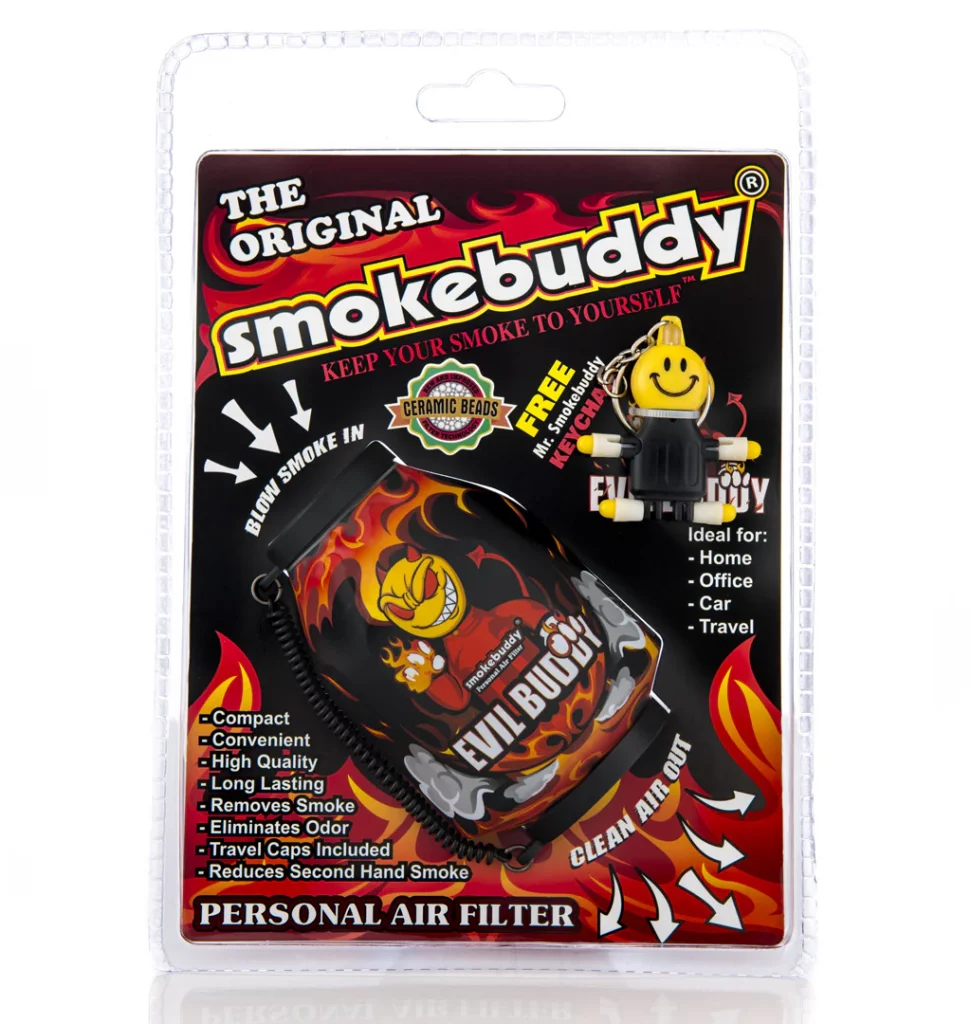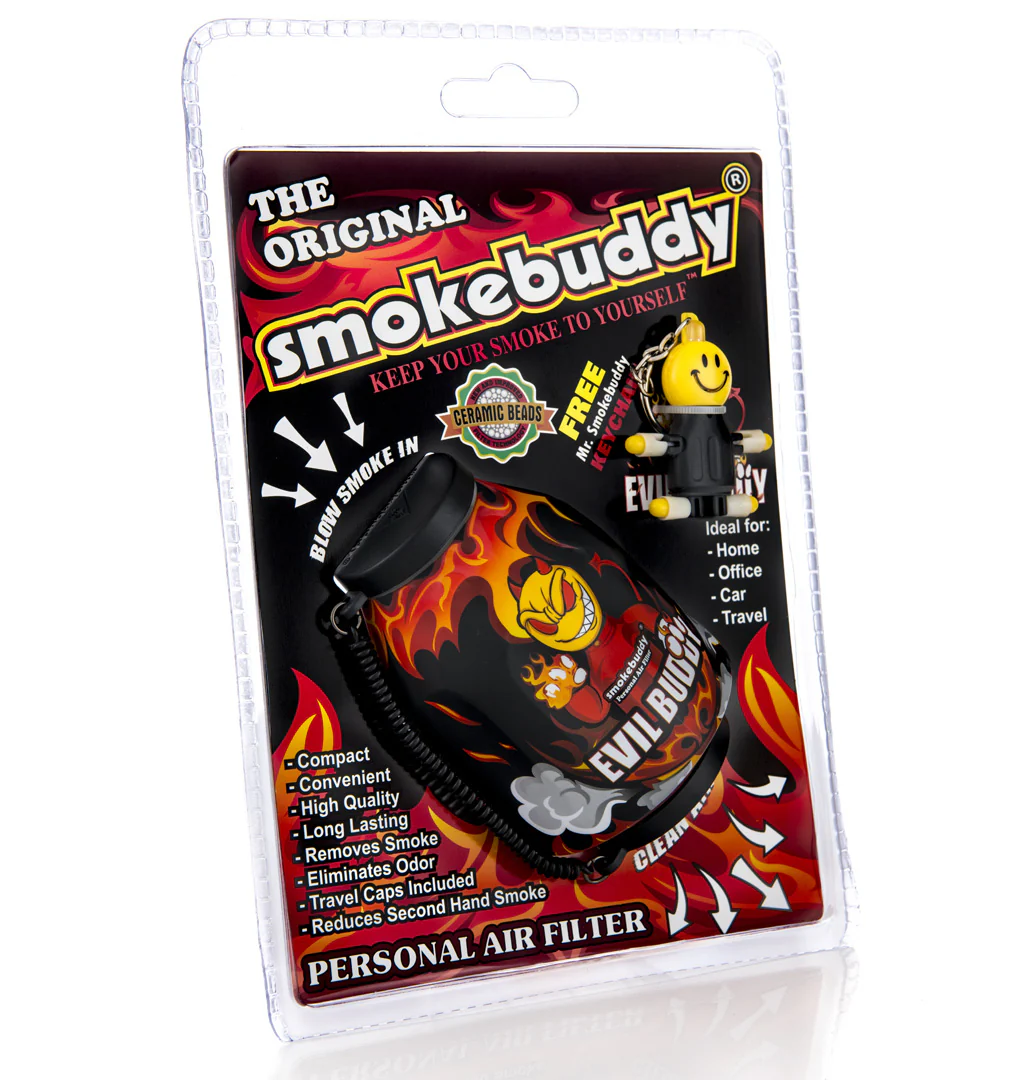There’s nothing like enjoying a solid session with friends, but the aftermath can sometimes be a problem, especially when it comes to the issue of smoke odor. Even after the windows are open and the fans are on, that stubborn smoke smell in fabric can stick around for days or even weeks. It gets into couches, clothes, car seats, and anything else with a bit of texture.
People who smoke regularly know that this is one of the most frustrating parts of the lifestyle. Knowing why smoke odor lingers and, more importantly, how to handle it is a must for anyone who wants to keep their space fresh and inviting.
It doesn’t matter if you are rolling solo, hosting the crew, or even just hanging out in a room where someone else smoked. The smoke smell in fabric is one of those things that sneaks up on you and can leave your space feeling less than fresh.
Over time, the scent can build up, making it harder to get rid of. If you want your room, clothes, or car to feel clean and keep your friends coming back, it’s important to handle smoke odor the right way.
This guide breaks down exactly why smoke odor sticks around, what makes fabric so tricky, and the best ways to kick that smell for good.
Before we get into it, here’s something worth checking out: Smokebuddy and their personal air filters. Clean, discreet, and reliable. Use code SLYNG2025 for 20% off your order.
What Makes Smoke Smell in Fabric So Persistent?

Everyone who’s ever smoked indoors or in the car knows how fast smoke smell in fabric becomes an issue. The scent doesn’t just hover in the air. It finds its way deep into the fibers, making the smell stubborn and hard to remove.
The Chemistry of Smoke and Fabric
When smoke fills a room, it’s more than just vapor. Smoke carries oils, ash, and microscopic particles that cling to every surface they touch. Fabric, with all its tiny spaces and threads, acts like a sponge for these particles. As the smoke settles, these particles work their way into the weave, making it almost impossible to shake the scent out with a quick airing.
Even a few minutes of exposure can result in a strong smoke smell in fabric. The more porous the material, the deeper the particles go. This is why wool, cotton, and upholstery often hold on to smoke smells much longer than leather or plastic surfaces. The chemistry makes it tough to simply spray and walk away. It takes a specific approach to handle these odors effectively.
Using a personal air filter during sessions can help limit how much smoke settles into your fabrics in the first place. These filters trap much of the odor at the source, keeping rooms and furniture fresher for longer.
Why Some Fabrics Are Worse Than Others
Not all fabrics trap odors the same way. Thicker and looser weaves, like those found in plush couches or blankets, provide even more space for smoke particles to settle. If the material is dark or textured, the scent seems to hold on tighter. Synthetic materials sometimes resist odors better, but even they aren’t immune after heavy or repeated exposure.
Car seats, carpets, and curtains are especially notorious for holding on to smoke smell in fabric. These areas often get overlooked during routine cleaning. By the time the scent becomes obvious, it is usually deeply embedded. To keep these spots smelling clean, a bit of prevention and regular care makes a huge difference.
A session with a personal smoking filter or a quick window crack can slow down the buildup. If you’re smoking indoors, even having a few personal smoke filters around will help trap much of the scent before it gets into the fibers.
How Humidity and Airflow Play a Role
Environmental factors like humidity and poor airflow can make the problem worse. In a damp or stuffy room, smoke particles settle more easily and stay trapped in the fabric. If the air is still, the smell lingers longer, sinking deeper into every textile surface.
Keeping windows open, running a fan, or using a personal air filter during and after a session can help keep the air moving. The faster the smoke leaves the room, the less likely it is to become a stubborn smoke smell in fabric. Consistent airflow and dry conditions are your friends when it comes to keeping the scent under control.
The Science of Smoke and How It Interacts With Fabric
Understanding why smoke smell in fabric lasts so long means knowing a bit about how smoke works at the microscopic level. It is not just the visible cloud that causes the problem.
What Smoke Is Made Of
Smoke from any source, herbal, tobacco, or even incense, is made up of thousands of chemicals. There are tar compounds, oils, resins, and tiny solid particles. When you smoke, the air fills with these invisible substances, and they begin settling onto every nearby surface.
The oily nature of these compounds is why the smoke smell in fabric can be so persistent. Oils stick to everything, and regular fabric cleaners are not always enough to break them down. This is why even after laundering, a hint of smoke odor can remain.
Using a personal smoking filter can capture a large percentage of these particles at the source. Not only does it help the air, but it can also keep clothes and furniture fresher, reducing how much deep cleaning you’ll need later.
How Fabric Structure Holds Odor
Fabrics are made up of tiny woven fibers, creating millions of microscopic pockets where particles can hide. Even if you wash a shirt or pillow cover, the particles can stay trapped inside the fibers. With each wash, some might be removed, but unless you use the right methods, the deeper ones remain.
That is why some items, like old coats or seat cushions, can still smell like smoke months after the last session. Fabrics that aren’t washed often, like drapes or couch covers, become long-term holders for smoke smell in fabric.
Frequent airing out, plus using a personal air filter when smoking, can prevent the scent from getting established in the first place. Prevention is easier than removing deep-set odors later.
Why Odor Neutralizers Only Go So Far
A lot of people try to handle smoke smell in fabric by spraying odor neutralizers or air fresheners. These products can help temporarily, but they do not actually remove the cause of the scent. The smoke particles remain in the fabric, and after the freshener fades, the smell comes right back.
Some sprays use chemicals that coat the fabric and block scent temporarily. Others might help break down some smoke odor molecules, but for heavy smoke exposure, you need deeper cleaning. A real solution involves both removing the source and preventing new smells from setting in.
That’s why personal smoking filters are such a good move for regular smokers. They keep fabrics from getting saturated with smoke odor in the first place.
Where Smoke Smell in Fabric Shows Up Most
Some places in a home, car, or even on your clothes will pick up and hold smoke odor faster than others. Knowing the hot spots makes it easier to target them before the smell becomes a permanent problem.
Upholstery and Furniture
Couches, armchairs, and any soft seating are magnets for smoke smell in fabric. The bigger the piece, the more surface area there is for particles to settle. If you smoke in the same room often, these items will be the first to pick up and hold onto the scent.
Cleaning large furniture is a bigger task than tossing a shirt in the wash. That is why many smokers start with prevention, laying down covers, using high quality personal air filters, or just moving sessions outside or to less-furnished spaces when possible.
If a couch or chair already smells like smoke, using a vacuum with a HEPA filter, steam cleaning, and regular airing can help. Pair these with sessions using a personal smoking filter and you can cut down on new smoke odor build-up significantly.
Clothes and Bedding
Any fabric that touches your body during a session is likely to pick up the smell. Hoodies, jeans, blankets, and bed sheets all act like sponges for smoke. The scent can stick even after one or two quick washes if you do not use the right approach.
If you are someone who smokes in bed or likes to chill under a favorite blanket, be prepared to wash these items more often. Hanging them outside or running them through a wash cycle with baking soda and vinegar can do wonders for stubborn smoke smell in fabric.
Wearing a clean “smoke shirt” for sessions, then switching back to fresh clothes after, is another little trick for cutting down on lingering scents. Using a personal air filter as you smoke can make an even bigger difference for your favorite jackets or bedding.
Car Interiors
Few places trap smoke odor as quickly or as deeply as a car’s interior. Seats, floor mats, and even ceiling liners hold on to smoke smell in fabric. Because the space is small and enclosed, smoke particles settle everywhere and are difficult to remove.
Cracking windows, keeping personal air filters in the car, and cleaning regularly can keep things fresher. If the smell becomes too strong, deep cleaning with fabric shampoos and portable ozone machines can help break it down. Still, prevention is always easier than removal.
Best Practices for Preventing Smoke Smell in Fabric

The best solution to smoke odor is to stop it before it starts. By changing a few habits and using the right tools, you can keep your home, car, and clothes fresher, no matter how often you smoke.
Smoking Outdoors or in Well-Ventilated Areas
Whenever possible, take sessions outside or to a spot with lots of airflow. The more smoke that leaves the room, the less ends up settling in fabric. Open windows, turn on fans, and point smoke away from anything soft or upholstered.
If you can’t go outside, use a personal smoking filter to trap smoke as you exhale. These filters do a great job of stopping smoke odor from spreading in the first place. Combined with airflow, you can cut down on lingering scents by a lot.
Even a few minutes outside after smoking can help your clothes and hair air out, making it less likely for the smoke smell in fabric to travel back inside.
Using Personal Air Filters Regularly
A personal air filter is a small, easy-to-use tool that cuts down on both smoke and odor at the source. Exhaling through a personal smoking filter traps much of the smell, preventing it from spreading to furniture, clothing, and other fabrics.
Having a few personal air filters around the house or car is a solid move for anyone serious about keeping their space clean. They are reusable, simple to carry, and make every session more discreet. This extra step is a game changer for regular smokers and makes a noticeable difference for everyone sharing the space.
Encouraging friends to use personal air filters at your spot helps, too. It keeps your place from smelling like an ashtray and makes it easier to freshen up quickly before guests come by.
Covering and Protecting Fabrics
Protecting your biggest investments, like couches or beds, with washable covers can keep smoke smell in fabric to a minimum. Tossing these covers in the wash after a session gets rid of most of the particles and helps keep the core of the item smoke odor-free.
For clothing, wearing a dedicated “smoke hoodie” or using a blanket during sessions can act as a barrier. Afterward, wash these items regularly with a good detergent, adding vinegar or baking soda for an extra boost.
In the car, seat covers and removable mats are your best friend. Take them out and air them after heavy sessions. Clean regularly and keep a personal air filter in the glove box for smoke emergencies.
Deep Cleaning Methods for Smoke Smell in Fabric
Once smoke has settled in, it takes more than just a quick spray or a regular wash to get rid of the scent. There are proven ways to handle the problem and make fabrics smell fresh again.
Vacuuming and Beating Out Smoke Odors
Start by vacuuming upholstery, car seats, and carpets with a machine that has a HEPA filter. This removes loose particles and some of the smoke odor that sits on the surface. For clothes and bedding, shaking them out or using a fabric brush before washing can loosen up deeper smoke smell in fabric.
Beating out rugs or cushions outdoors lets more particles escape, and the fresh air helps reduce the smell. This step preps the fabric for the deeper cleaning methods to follow.
Make sure to vacuum or shake things regularly, even before the smell becomes obvious. Regular care prevents smoke odors from getting out of hand.
Washing With Smoke Odor-Absorbing Additives
Standard detergent is sometimes not enough to break down the oily particles left by smoke. Add baking soda or vinegar to the wash to help neutralize smoke odors. Enzyme-based cleaners or special smoke odor-fighting detergents are also available for tougher jobs.
When dealing with smoke smell in fabric, use the hottest water that the item allows. Double washing or soaking items before a regular wash can boost your results. Dry items outdoors whenever possible, as the sun and fresh air help finish the job.
This method works for clothes, bedding, curtains, and any other washable fabric. For things that can’t be machine-washed, spot cleaning or dry-cleaning might be needed.
Professional and DIY Steam Cleaning
For furniture, carpets, and car interiors, steam cleaning is one of the most effective ways to break down the particles causing smoke smell in fabric. Hot steam gets deep into the fibers, loosening up the oils and smoke odor. Most rental carpet cleaners or upholstery machines can be used for this purpose.
If you prefer a DIY approach, use a handheld steamer and follow up with a quick dry using fans or open windows. Always check the manufacturer’s instructions to avoid damaging the fabric. Repeat as needed until the smell is gone.
Steam cleaning not only handles smoke odor, but it also refreshes the appearance of fabric and helps extend its life. It is one of the most thorough ways to tackle smoke smell in fabric.
Long-Term Habits for Keeping Fabrics Fresh
Beating smoke smell in fabric is not a one-time thing. It takes a few long-term habits to keep the scent from creeping back in.
Regular Maintenance and Airing Out
Every few days, open windows and let the air circulate through your space. Move furniture away from the walls, lift up rugs, and hang blankets or clothes outside if possible. Airing out the whole space gets rid of trapped particles before they become a permanent problem.
Make vacuuming and surface cleaning part of your routine, especially after smoking sessions. Wash covers, blankets, and clothes more often if they are regularly exposed to smoke. Small steps, repeated often, have a big impact on preventing smoke smell in fabric from taking hold.
Using Smoke Odor Absorbers and Neutralizers
Placing smoke odor-absorbing products like baking soda boxes, activated charcoal bags, or specialized odor neutralizers around the room can help cut down on lingering scents. Put them near sofas, closets, or inside the car for the best results.
While these do not replace deep cleaning or prevention, they can stretch out the time between major cleanings and keep the air feeling lighter. Use them alongside personal air filters during sessions to get the best of both worlds.
Replace smoke odor absorbers regularly to keep them working at their best. Combined with the other steps in this guide, they will make a big difference.
Replacing or Refreshing Old Fabrics
Sometimes, the smoke smell in fabric becomes too strong to fully remove. When this happens, consider replacing items like old pillows, throw blankets, or even car mats. New fabrics hold less smoke odor and make it easier to keep the space fresh.
For items you do not want to replace, try giving them a makeover with deep cleaning, sun-drying, and using personal air filters during future sessions to prevent further build-up. Every little upgrade helps your space stay clean and inviting.
FAQs
Why does smoke smell in fabric last so long even after washing?
Smoke particles are oily and cling deep inside fabric fibers. Regular detergent and washing only reach the surface, leaving deeper smoke odor-causing compounds behind. That is why deep cleaning, smoke odor-neutralizing additives, and regular airing out are needed for real results.
Can personal air filters really help prevent smoke smell in fabric?
Yes. Using a personal air filter during smoking sessions traps much of the odor and smoke at the source. This keeps fabrics, furniture, and clothes fresher for longer, making cleanup and maintenance easier.
What is the fastest way to get smoke odor out of clothes?
Wash clothes with baking soda or vinegar added to your detergent. Hang them outside to dry in the sun and wind for best results. If the smell remains, repeat the process or try an enzyme-based cleaner designed for tough odors.
How do I keep my car seats from smelling like smoke?
Crack windows during and after sessions, clean with a vacuum regularly, and use fabric shampoos or steam cleaners on the seats and carpets. Keeping a personal air filter handy in the car can help prevent smoke odor build-up between cleanings.
Are there any long-term solutions for smoke smell in fabric?
Long-term solutions for smoke odor include regular deep cleaning, using personal smoking filters during every session, airing out fabrics often, and occasionally replacing items that have absorbed too much odor. Combining prevention with maintenance is the best way to keep spaces fresh.
